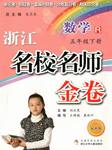题目内容
The iPhone, the iPad: each of Apple’s products sounds cool and has become a fad(一时的风尚). Apple has cleverly taken advantage of the power of the letter “i” – and many other brands are following suit. The BBC’s iPlayer – which allows Web users to watch TV programs on the Internet –-used the title in 2008. A lovely bear – popular in the US and UK – that plays music and video is called “iTeddy”. A slimmed-down version of London’s Independent newspaper was started last week under the name “i”.
In general, single-letter prefixes(前缀) have been popular since the 1990s, when terms such as e-mail and e-commerce first came into use.
Most “i” products are targeted at (针对)young people and considering the major readers of Independent’s “i”, it’s no surprise that they’ve selected this fashionable name.
But it’s hard to see what’s so special about the letter “i”. Why not use “a”, “b”, or “c” instead? According to Tony Thorne, head of the Language Center at King’s College, London, “i” works because its meaning has become ambiguous. When Apple uses “i”, no one knows whether it means Internet, information, individual or interactive, Thorne told BBC Magazines. “Even when Apple created the iPod, it seems it didn’t have one clear definition(定义),” he says.
“However, thanks to Apple, the term is now connected with portability (轻便) .”adds Thorne.
Clearly the letter “i” also agrees with the idea that the Western World is centered on the individual. Each person believes they have their own needs, and we love personalized products for this reason.
Along with “Google” and “blog”, readers of BBC Magazines voted “i” as one of the top 20 words that have come to define the last decade(十年).
But as history shows, people grow tired of fads. From the 1900s to 1990s, products with “2000” in their names became fashionable as the year was connected with all things advanced and modern. However, as we entered the new century, the fashion disappeared.
1. People use iPlayer to __________.
A. listen to music B. make a call
C. watch TV programs online D. read newspapers
2. We can infer that the Independent’s “i” is designed for _________.
A. young readers B. old readers C. fashionable women D. engineers
3. The underlined word “ambiguous” means “__________”.
A. popular B. uncertain C. clear D. unique
4. Nowadays, the “i” term often reminds people of the products which are __________.
A. portable B. environmentally friendly C. advanced D. recyclable
5. The writer suggests that __________.
A. “i” products are often of high quality
B. iTeddy is alive bear
C. the letter “b” replaces letter “i” to name the products
D. the popularity of “i” products may not last long
CABAD

 浙江名校名师金卷系列答案
浙江名校名师金卷系列答案